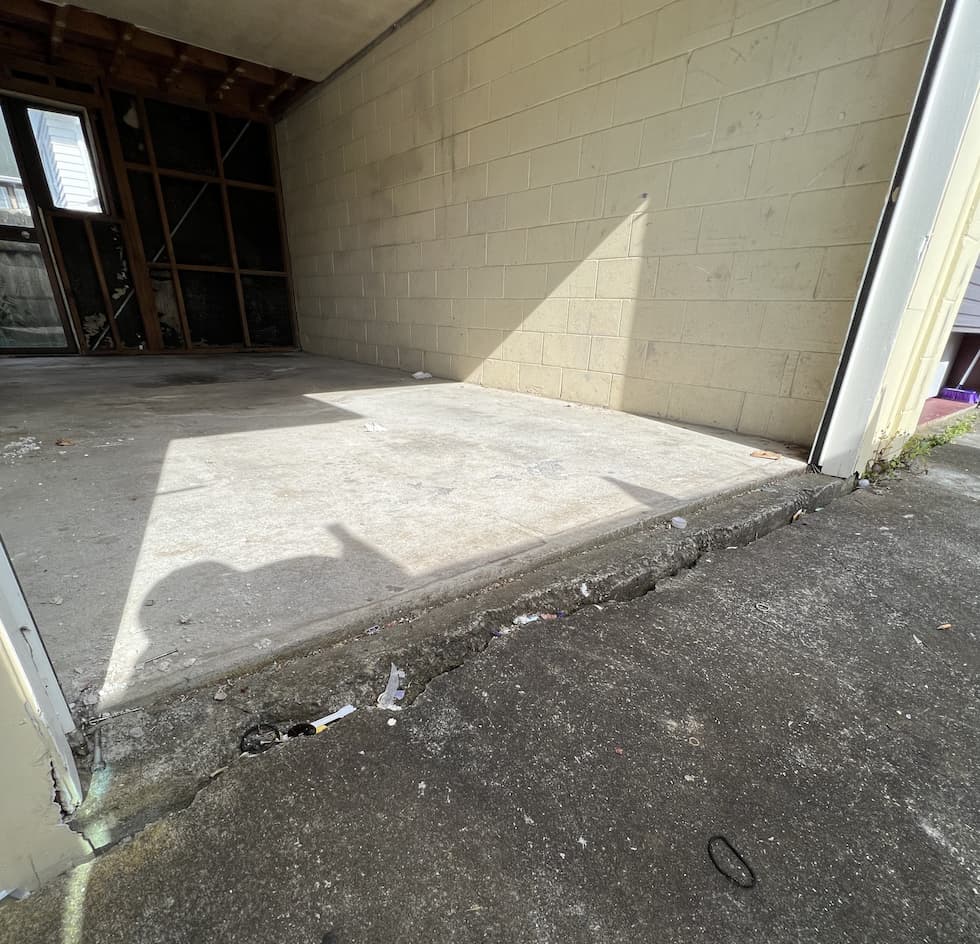We inspect hundreds of foundations across New Zealand each year, so we’ve become very familiar with the signs and symptoms associated with foundations that need repairs.
Signs and Symptoms
Here are some of the most common signs that we see day to day.
Cracks to Exterior
Characterised by a combination of step cracks and vertical/diagonal cracks leading from a fixture of a building to an adjacent corner.
They are mostly evident on masonry and concrete walls where the crack is wider at the top, indicating the wall settling or heaving.
They are normally jagged or zig-zagged and don’t follow a uniform pattern.
The mortar and masonry deteriorates over time due to the movement of the affected wall.
Overtime, the cracks will become wider as the foundation continues to move, compromising the structural integrity of the building.
Common signs of step wall cracks are when one side of the wall is higher than the other or cracks are wider than about 5mm. If unaddressed, the subsidence can worsen making the building structurally unsafe
Typical Causes
- Spoil Types
- Excess Water
- Tree Roots
- Adverse Weather
- Footing System
- Nearby Construction
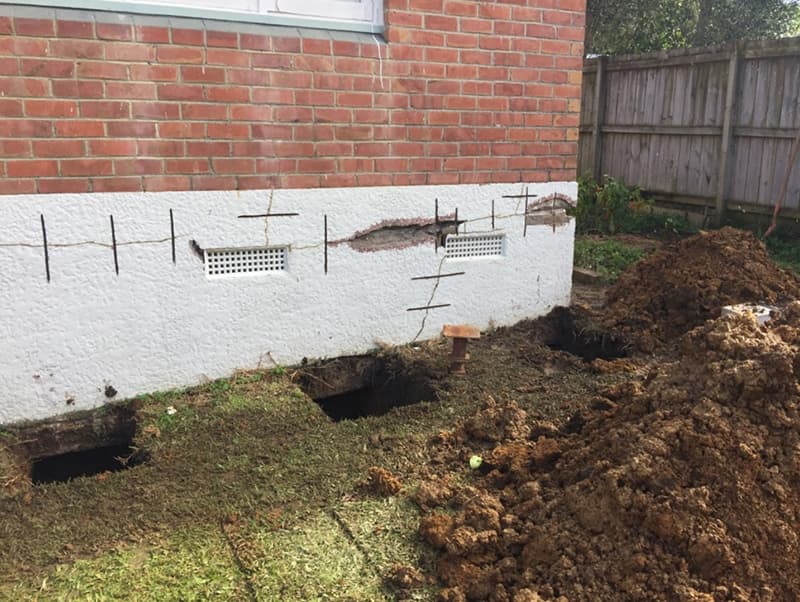

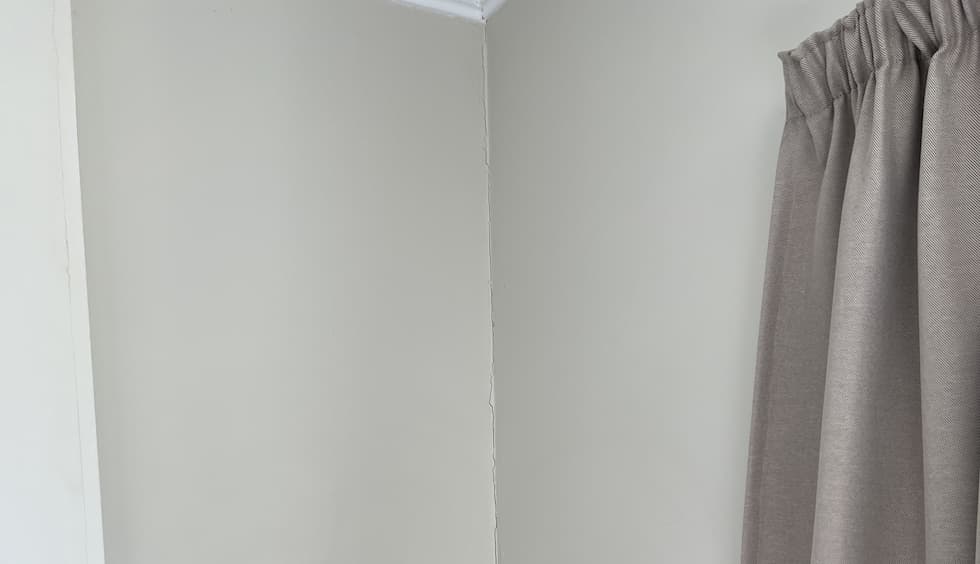
Cracks to Interior
If you have owned your house long enough, you have probably experienced some Gib wall cracking somewhere in your house at some point.
Gib wall cracks can be caused by numerous reasons that don’t always result in having a foundation problem with your home.
It’s a fact that Gib wall cracks within your home will happen, however knowing what the cause of the cracks is will help you better assess on the correct repairs needed to remedy them
But overtime, if the cracks become wider as the foundation continues to move, compromising the structural integrity of the building.
Windows and doors generally misalign and external substances such as air, water, and noise seep in.
Typical Causes
- Spoil Types
- Excess Water
- Tree Roots
- Adverse Weather
- Footing System
- Nearby Construction
Jammed Windows
Doors and windows that don’t open smoothly, have uneven gaps, or rub against frames are often a first indication of foundation damage.
All structures, regardless of age, are susceptible to foundation damage, which occurs when soil underneath the building starts to move or settle.
Also referred to as subsidence, the ground beneath the structure is unable to support the weight of the building and can cause internal and external fixtures to move and misalign.
Typical Causes
- Spoil Types
- Excess Water
- Tree Roots
- Adverse Weather
- Footing System
- Nearby Construction

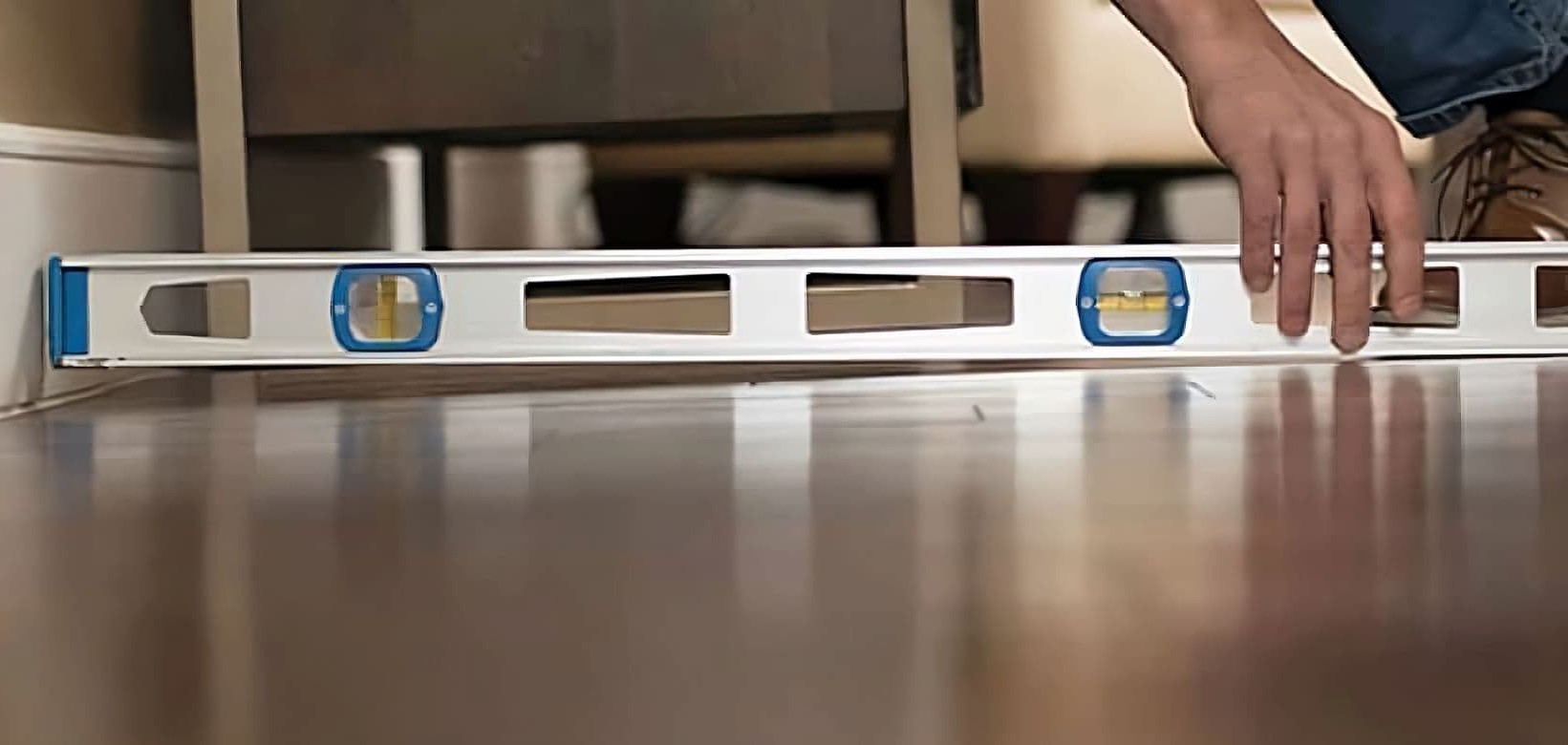
Sloping Floors
A sinking building extension can be an indication of weak ground where the added weight of the new structure has caused soil movement as it settles.
Normally due to poor soil compaction and inadequate foundation planning during construction the extension will continue to subside overtime.
Avoiding rectification can cause further damage to foundations affecting doors, windows and unlevel floors.
Typical Causes
- Spoil Types
- Excess Water
- Tree Roots
- Adverse Weather
- Footing System
- Nearby Construction
Weak Ground
Sinking and uneven concrete driveways or path slabs can be an indication of unstable ground due to voids beneath the surface.
If there is noticeable soil building up around slab joints, the concrete slab can start to crack around the edges as weight is exerted where there is no ground support.
Leaving it untreated could potentially be a trip hazard or damage your vehicle’s tyres and underbody.
Typical Causes
- Spoil Types
- Excess Water
- Tree Roots
- Adverse Weather
- Nearby Construction
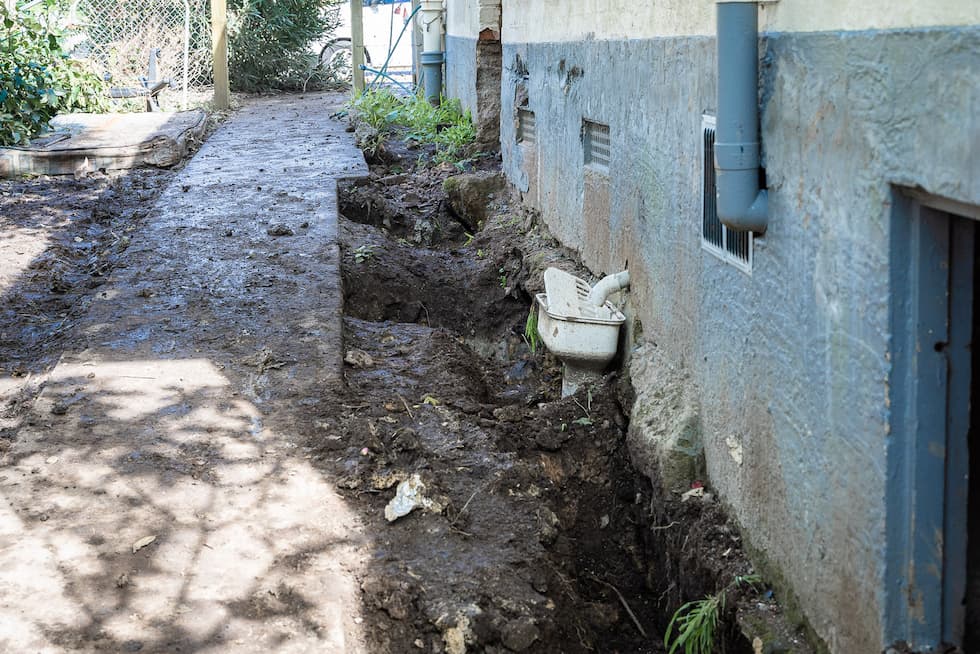
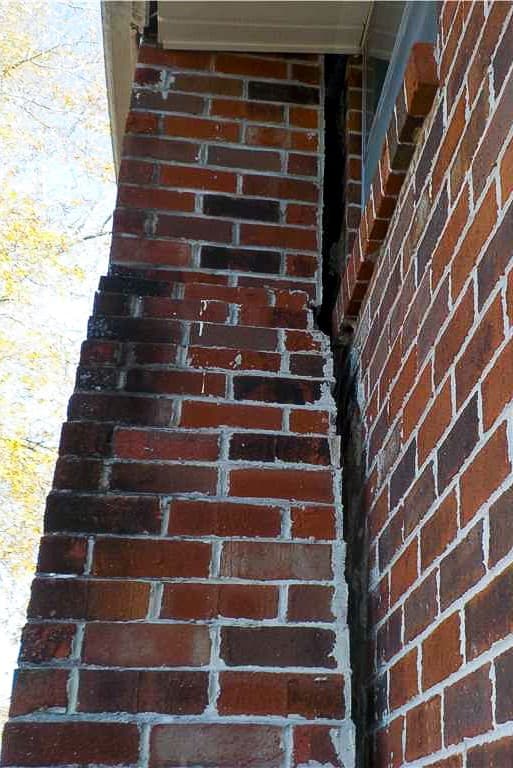
Leaning Chimney
A leaning or tilted chimney tends to be a more noticeable foundation issue. It is also a very dangerous problem when your chimney tilts or leans, it can either fall in on your home, or the mortar can come loose and fall. The weight of a sinking chimney can assist to drag a house foundation down with it.
Have you ever looked at the size of a chimney? Chimneys are often large outsets that are set away from the exterior walls of the home.
The reason being is that chimneys need to be a minimum of 4″ of solid masonry to be constructed correctly. This design not only requires additional space, but it also adds a lot of additional weight.
The weight of the chimney will then have to be transferred onto a typically larger footing to support it. Think of the chimney and the footing as a big concrete rectangle. This rectangle is also going to be top heavy just because of its required height to stretch beyond the roof line of the home.
This added weight with poorly compacted soils will start to cause the chimney to rotate away from the home. The reason that it rotates away is that there is typically minimal strapping towards the top of the chimney, and it is easier for the chimney to rotate away from the home than into it where it has additional support from the framing of the home.
When you look at your chimney the easiest way to tell if it is moving is to look up towards the top of the chimney by the roof line. You will notice a larger gap at the top as the top will pull away at a quicker rate than the lower portion.
The best way to fix a leaning chimney is to put piers on 3 sides of the chimney. 1 on each side and 1 in the rear. The piers on the side of the chimney will help to keep the chimney from leaning from side to side and keep it level. The pier in the back of the chimney is there to lift that portion of the footing and rotate the chimney back into place towards the framing of the home. This method of repair is highly effective at correcting a leaning chimney.
Typical Causes
- Spoil Types
- Excess Water
- Tree Roots
- Adverse Weather
- Footing System
- Nearby Construction
Concrete Slab Repair
Cracks in concrete slabs can cause numerous problems with a home and should not be ignored
Not only are they unpleasing to the eye but they can have significant negative structural implications long term.
Cracks are usually caused by a source or a underlying factor. These factors can be from your exterior foundation moving up or down or even sideways if you are on a slope.
Cracks in your home’s concrete slab can not only have structural implications, but they can also be a great entry point for water intrusion and insects.
The primary reason a crack occurs is it is acting like a hinge point for the movement.
That area where the crack appears, is more than likely the area that is experiencing the most stress.
Just like when an earthquake occurs you have fissures in the ground to relieve the stress.
So, if you are experiencing foundation movement, you will be able to follow the crack to the exterior of the home where there, more than likely is a crack in the exterior foundation.
Our goal when repairing concrete slab cracks is to alleviate the additional load or stress that is being applied to the slab and foundation.
Once the stress is relieved then we can repair the crack.
Typical Causes
- Spoil Types
- Excess Water
- Tree Roots
- Adverse Weather
- Footing System
- Nearby Construction
